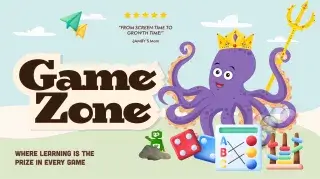

Written by: Kokotree
Last updated:

We all admire a delightful game that keeps a child’s big smile on their faces, don’t we? How about a game with fun and excitement that also helps children build self-control and cognitive abilities? Meet the “Stop and Go” game. This lively toddler and preschool game has taken the world of early education by storm. Much like the beloved “Musical Chairs,” children respond to verbal commands, improving their listening skills, reaction times, and acquiring a sense of self-regulation. Buckle up for an informative journey into this early education sensation.
Stop and Go is a straightforward yet engaging game for kids, particularly suited for toddlers and preschoolers. It involves children moving around freely until a command is given, to either ‘stop’ or ‘go.’ The main aspect here is that the children must respond promptly to the instructions, thereby enhancing their attention span, self-control, and cognitive development.
For ages 2-6. They watch and play for 20 minutes. You get a break.
⭐ 5,000+ parents get daily breaks with Kokotree.
Try it Free →Works in 30 seconds • No credit card • Cancel anytime
The primary aim of Stop and Go is to help children develop a sense of self-control and obediently follow directions. It targets improving the listening skills, reaction times, and motor coordination of a child.
Playing Stop and Go boosts various developmental skills such as:
To add a twist and make the game more engaging, you can introduce variations such as:
Make the game more educational by swapping ‘stop’ and ‘go’ with words or phrases from different languages. This introduces children to foreign cultures. Also, shift roles and let the children take turns being the commander promoting leadership skills.
Always make sure the play area is clear of any obstacles. In an outdoor setting, ascertain the surroundings are safe for children. Always supervise the game to avoid any mishaps.
To recap, Stop and Go is an exciting, fun-filled game that promotes self-control, cognitive abilities, and motor skills among toddlers and preschoolers. As simple as it sounds, this game is a powerful tool for early education. Whether you’re a parent or teacher, integrate this captivating game into your kiddies’ playtime. Reinventing popular games like ‘Musical Chairs,’ the Stop and Go surely stands out. Ready, set, stop, and go!



